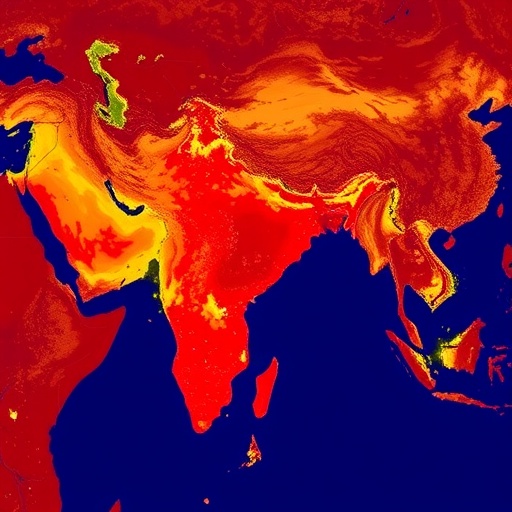The research article by Kumar and Pradhan presents a compelling exploration of the migration patterns in India in the post-pandemic landscape. As economies globally start resuming their activities, understanding migration dynamics has never been more critical. This analysis surfaces the underlying socio-economic and political factors that drive migration, especially in a diverse and complex nation like India, which has seen significant shifts in its population movements, particularly post-COVID-19.
Migration has always been a part of India’s socio-economic fabric, with millions seeking better opportunities across regions. However, the recent COVID-19 pandemic has altered traditional trends in ways that require a new analytical lens. Kumar and Pradhan argue that the pandemic acted as a catalyst that not only changed the demographics of migration but also shifted the motivations that underpin it. For instance, individuals who were once motivated primarily by economic opportunities have now begun to consider health and safety as crucial factors.
One vital aspect highlighted in the article is the regional analysis of migration patterns that reflects the dissimilar socio-economic landscapes within India. Certain states have consistently been net contributors to internal migration due to their burgeoning economies, while others face challenges that push their residents to seek better prospects elsewhere. The researchers analyze these discrepancies, showing how regional policies and development initiatives can influence these movements.
Moreover, Kumar and Pradhan explore the determinants of migration beyond mere economic factors. They dive into how societal structures, local governance, and environmental concerns are increasingly shaping migration decisions. The authors shed light on communities that have been historically marginalized and how their migration experiences differ from those of more privileged groups. This broader socio-political lens provides a richer understanding of migration, focusing on issues like caste, class, and gender roles, which are intricately tied to mobility.
The post-pandemic period also brought about a new realization of vulnerabilities that previously went unnoticed. Many migrants faced hardships during the lockdown, making it clear that safety and security are paramount. This shift has led to a reevaluation of what constitutes a ‘desirable’ destination for migrants. The findings suggest that resilience in the face of crises has become a new criterion for migration, with individuals now more inclined to move to regions perceived as safer and more stable.
Throughout their research, the authors employed a mix of quantitative and qualitative methodologies that allowed them to draw nuanced conclusions. Surveys conducted in diverse settings provided quantitative data which they complemented with in-depth interviews, ensuring that the voices of migrants were not just numbers on a page but represented real, lived experiences. This methodological richness makes the research robust and relevant to policymakers.
Policy implications arising from the findings are numerous and urgent. The study advocates for inclusive policies that take into account the needs and aspirations of migrants. It cautions against a one-size-fits-all approach, urging local governments to craft targeted interventions that consider the unique circumstances of their regions. For instance, upskilling programs tailored to local economic needs can significantly enhance the livelihood prospects for migrants.
Another critical aspect discussed in the article is the long-term implications of migration on both sending and receiving regions. While migration can relieve pressure in areas with high unemployment, it can also strain resources in destination areas. The authors underscore the need for comprehensive urban planning and development strategies that incorporate the demands of new residents while also preserving the interests of long-standing communities.
Kumar and Pradhan’s study is timely and essential, especially in the face of ongoing global challenges like climate change, which could lead to new waves of migration. Their insights may serve as a foundational text for forthcoming debates and discussions surrounding labor rights, migration policies, and socio-economic development in the broader context of a changing world. Understanding these dynamics will be crucial for governments and NGOs aiming to create a more equitable society.
In summary, the post-pandemic migration landscape in India is shaped by a multitude of factors that go beyond traditional economic motivations. Kumar and Pradhan effectively highlight these complexities, offering a fresh perspective on migration in a nation grappling with pressing socio-economic challenges. Their comprehensive analysis provides a roadmap for understanding and responding to the evolving patterns of human mobility.
The article does not merely contribute to academic discourse; it has practical implications for policymakers tasked with managing migration effectively. As nations navigate the path toward recovery, the insights presented can help craft policies that recognize and harness the potential of migration while safeguarding the rights and well-being of all individuals involved in this dynamic process.
Subject of Research: Migration patterns and determinants in India post-COVID-19.
Article Title: Correction: Regional analysis of patterns and determinants of migration in India: insights from post-pandemic period and future implications.
Article References:
Kumar, V., Pradhan, K.C. Correction: Regional analysis of patterns and determinants of migration in India: insights from post-pandemic period and future implications. J Pop Research 42, 35 (2025). https://doi.org/10.1007/s12546-025-09387-w
Image Credits: AI Generated
DOI: 10.1007/s12546-025-09387-w
Keywords: Migration, socio-economic factors, India, COVID-19, regional analysis, policy implications, urban planning.




